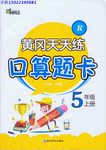题目内容
Would it surprise you to learn that, like animals, trees communicate with each other and pass on their wealth to the next generation?
UBC Professor Simard explains how trees are much more complex than most of us ever imagined.Although Charles Darwin thought that trees are competing for survival of the fittest, Simard shows just how wrong he was.In fact, the opposite is true: trees survive through their co-operation and support, passing around necessary nutrition “depending on who needs it”.
Nitrogen(氮) and carbon are shared through miles of underground fungi(真菌) networks, making sure that all trees in the forest ecological system give and receive just the right amount to keep them all healthy. This hidden system works in a very similar way to the networks of neurons(神经元)in our brains, and when one tree is destroyed, it affects all.
Simard talks about “mother trees”, usually the largest and oldest plants on which all other trees depend.She explains how dying trees pass on the wealth to the next generation, transporting important minerals to young trees so they may continue to grow.When humans cut down “mother trees” with no awareness of these highly complex “tree societies” or the networks on which they feed, we are reducing the chances of survival for the entire forest.
“We didn't take any notice of it.” Simard says sadly.“Dying trees move nutrition into the young trees before dying, but we never give them chance.” If we could put across the message to the forestry industry, we could make a huge difference towards our environmental protection efforts for the future.
1.What would be the best title for the passage?
A.Old Trees Communicate Like Humans
B.Young Trees Are In Need Of Protection
C.Trees Contribute To Our Society
D.Trees Are More Complex Than You Think
2.In Simard's opinion, trees _______
A.compete for survival B.protect their own wealth
C.depend on each other D.provide support for dying trees
3.We can learn from the passage that .
A.“mother trees” are usually of no use to other trees.
B.Charles Darwin had the same thought as Simard.
C. if “mother trees” are cut down, the survival for the entire forest will be affected.
D.people know much about the complex “tree societies”.
4.The underlined word “it” in the last paragraph refers to .
A.how “tree societies” work
B.how trees grow old
C.how forestry industry develops
D.how young trees survive
1.D
2.C
3.C
4.A
【解析】
试题分析:本文讲述树的彼此依赖的生存模式以及树的社会。
1. Professor Simard explains how trees are much more complex than most of us ever imagined. Simard解释说树比我们大部分想的更复杂,后文则是阐述树的复杂性之所在,故本文最好标题是树比你想的更复杂,故选D
2. survive through their co-operation and support树通过彼此合作和支持来生存的,及树是彼此依靠的,故选C
3. humans cut down “mother trees” with no awareness of these highly complex “tree societies” or the networks on which they feed, we are reducing the chances of survival for the entire forest当人类砍掉母树没有意识到树的复杂性和他们生存的网络,我们就在减少整个森林生存的机会,可知母树被砍倒后,整个森林会受影响,故选C
4. humans cut down “mother trees” with no awareness of these highly complex “tree societies” or the networks on which they feed, we are reducing the chances of survival for the entire forest. “We didn't take any notice of it. 当人类砍掉母树没有意识到树的复杂性和他们生存的网络,我们就在减少整个森林生存的机会。我们没有意识到,可知it指代树社会是如何工作的,故选A
考点:考查科普文阅读。

 黄冈天天练口算题卡系列答案
黄冈天天练口算题卡系列答案